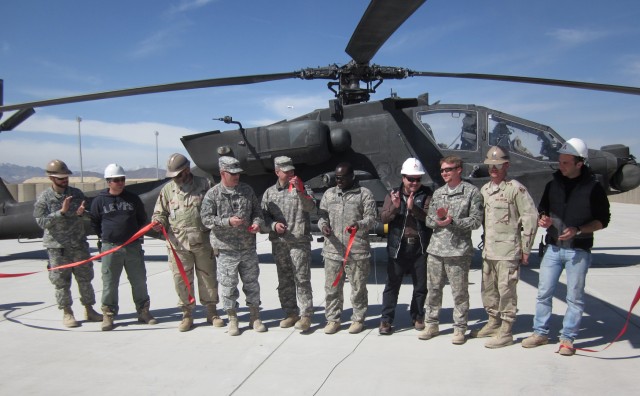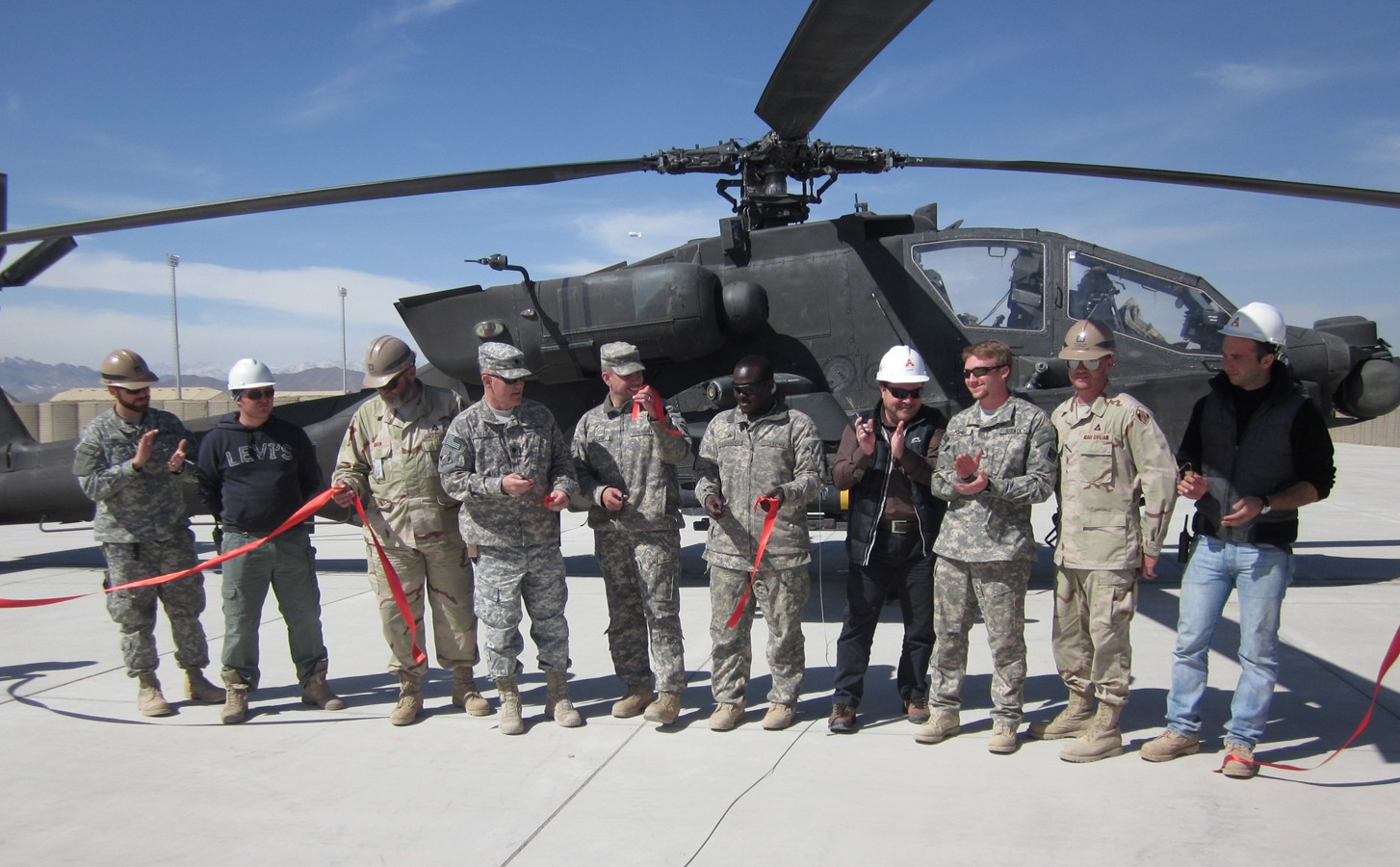
LOGAR PROVINCE, Afghanistan - Military and civilian engineers completed a four-year project March 10 designed to increase Forward Operating Base Shank's ability to receive, refuel and arm aircraft.
The project was a coordinated effort among METAG, a Turkish contractor; the U.S. Army Corps of Engineers and 10th Mountain Division (LI). It included a new runway capable of receiving fully loaded U.S. Air Force C-17 Globemaster III airlift aircraft, a parking ramp and a new forward arming and refuelling point.
According to Sgt. Alan Allosada, a petroleum supply specialist with 1st Battalion, 171st Aviation Regiment, the new automated aircraft fuelling system was long overdue.
"Because it's automated, mistakes in fuel accountability and accuracy are less likely to occur," said Allosada. "This system will enhance our spill contingency plan, too. The idea is to eliminate the need for manpower so the aircraft's (refuelling) time goes down."
Before the improvements, it would take refuelling specialists one hour to fill one 25,000-gallon fuel bladder. The automated system enables workers to fill two bladders simultaneously in 30 minutes.
The concrete pad also will speed up the refuelling process.
"It's concrete so the aircraft can taxi in, receive fuel, re-arm and taxi out," said Sgt. Donnis Greenwood, a petroleum supply specialist with Task Force Knighthawk, 10th Combat Aviation Brigade. "The pipeline is underground. It has sheltered ports like a drive-through. Hand valves are at each point; the pumps and hoses are boxed to protect them from the elements, and the electric shut-off valve is a huge safety feature."
Greenwood served as one of many subject-matter experts who tested the system before certification. He worked closely with civilian and METAG contractors to ensure the FARP met aviation standards.

Social Sharing